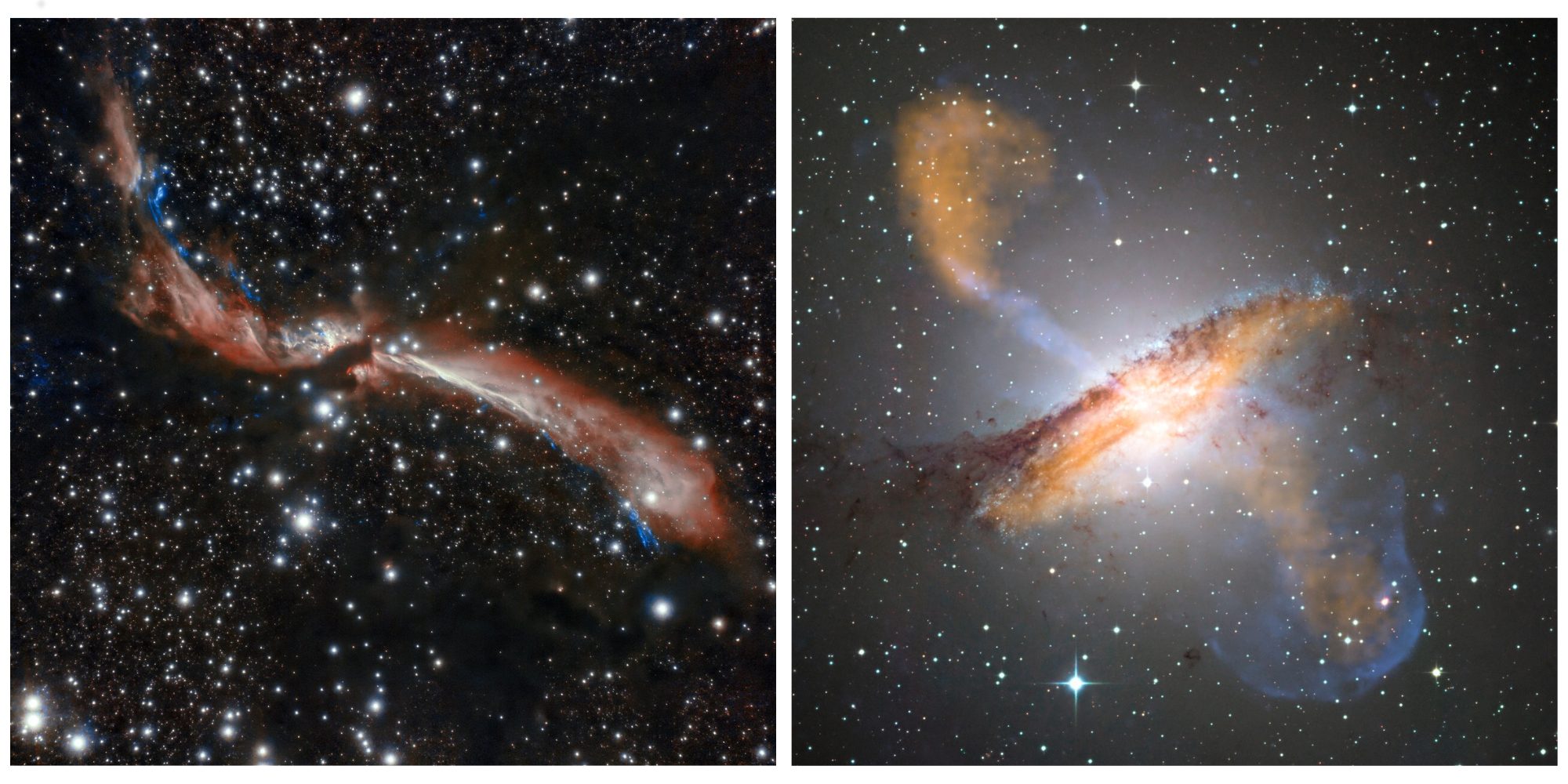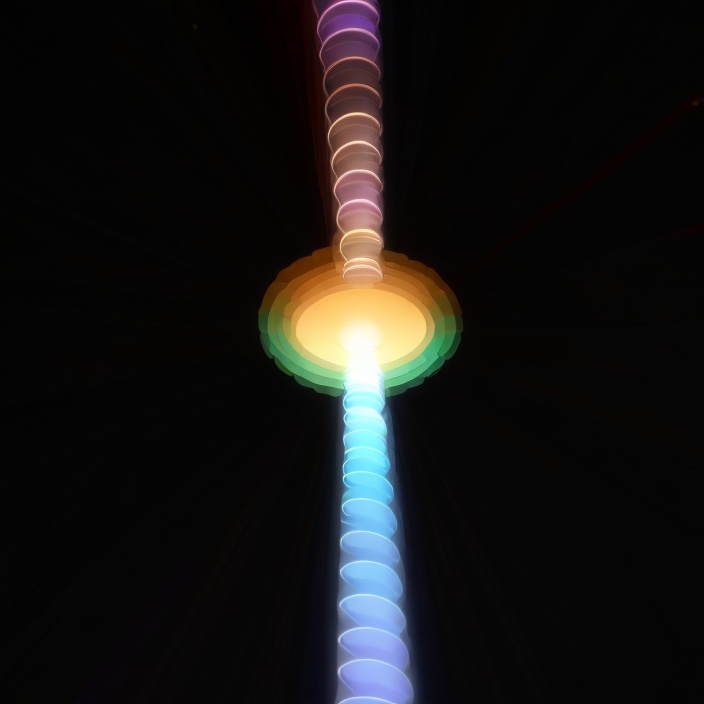El importante avance publicado en la revista The Astrophysical Journal Letters fue logrado por un equipo internacional liderado por Adriana Rodríguez-Kamenetzky del IATE e integrado por colegas de México, España e India.
By Facundo Rodriguez
facundo.rodriguez@unc.edu.ar
In the universe, there are various types of objects that emit jets of matter and energy, commonly referred to as jets. These objects include protostars, which are stars in the process of formation, and supermassive black holes found at the centres of galaxies. Protostars are similar in size to our Sun, while supermassive black holes can have masses hundreds of billions of times greater. Despite this significant difference in scale, both types of objects share a similar process: a central object consumes material from its surroundings, resulting in the release of energetic jets. Although this phenomenon has been observed, it remains unclear whether a single mechanism can explain the generation of these jets across such different scales. This is precisely the focus of the recently published work.

To clarify the mechanism behind jet generation, an international team took a multidisciplinary approach to analyze the jets of a protostar for the first time. They focused on a highly energetic protostar jet known as HH 80-81, which exhibits a type of emission called synchrotron emission. This type of emission, also seen in jets from active galaxies, is linked to magnetic fields and offers valuable insights into how the ejected material is organized into jets. It helps us understand the structure of the material as it exits the protostar and the direction in which it is moving.
‘To study in detail the magnetic field in protostar jets with synchrotron emission requires very deep observations that allow us to analyse how this emission behaves at different wavelengths, which requires a great observational effort,’ explains CONICET researcher Adriana Rodríguez Kamenetzky, who has been working on these issues for a decade. She adds, ‘the main challenge is that the emission from protostellar jets is mainly thermal, which does not provide information about the magnetic fields, so this study allowed us to study for the first time the three-dimensional configuration of the magnetic fields in a protostellar jet.
Magnetic fields and helices
As a result of this analysis, the publication was able to describe that its structure has a helical, i.e. helical, shape and, furthermore, that this characteristic is not related to the interaction with the surrounding material but is a mechanism of the system formed by the disc and the protostar.
Using the Karl G. Jansky Very Large Array (NSF VLA) radio telescope, the team was able to analyse the magnetic structure of the HH 80-81 jet and, in particular, its two jets. This is the first solid evidence that helical magnetic fields can explain astrophysical jets on different scales, supporting the universality of the launch and collimation mechanism,’ says Adriana.

The relevance of this finding is that the structure of the magnetic fields is similar to that observed in extragalactic jets. It, therefore, provides hints that there is a universal mechanism that ejects and shapes them, independent of the scales of these jets. This provides clues to the physics behind these phenomena and allows us to further relate the observations to theoretical models in order to explain the emergence and evolution of the systems that host them.
Future work
To study the mechanisms found in more detail, it is planned to request new observations to investigate the area around the protostar in more detail, which will help to better understand the jets and, from them, the processes of star formation and evolution. These studies also help pave the way for the use of next-generation radio telescopes such as the Square Kilometre Array (SKA) and the Next Generation Very Large Array (ngVLA), which will allow us to observe stars more closely and to study certain types of light emission, such as synchrotron emission, with greater precision and sensitivity.
In addition, the results obtained bring with them the challenge of better explaining and theoretically modelling this mechanism, which seems to be universal and found from observations.
‘This is a breakthrough in the study of jets that opens up many possibilities for future work to deepen our understanding of the star formation process,’ concludes the IATE researcher.
Scientific publication |
| Helical Magnetic Field in a Massive Protostellar Jet
Team | Adriana Rodríguez-Kamenetzky (IATE, CONICET/UNC, Argentina), Alice Pasetto (IRyA, UNAM, México), Carlos Carrasco-González (IRyA, UNAM, México), Luis F. Rodríguez (IRyA, UNAM, México), José L. Gómez (IAA, CSIC, España), Guillem Anglada (IAA, CSIC, España), José M. Torrelles (ICE-CSIC, España), Nuno R. C. Gomes (IEEC, España), Sarita Vig (Indian Institute of Space Science and Technology, India), & Josep Martí (Universidad de Jaén, España). |
